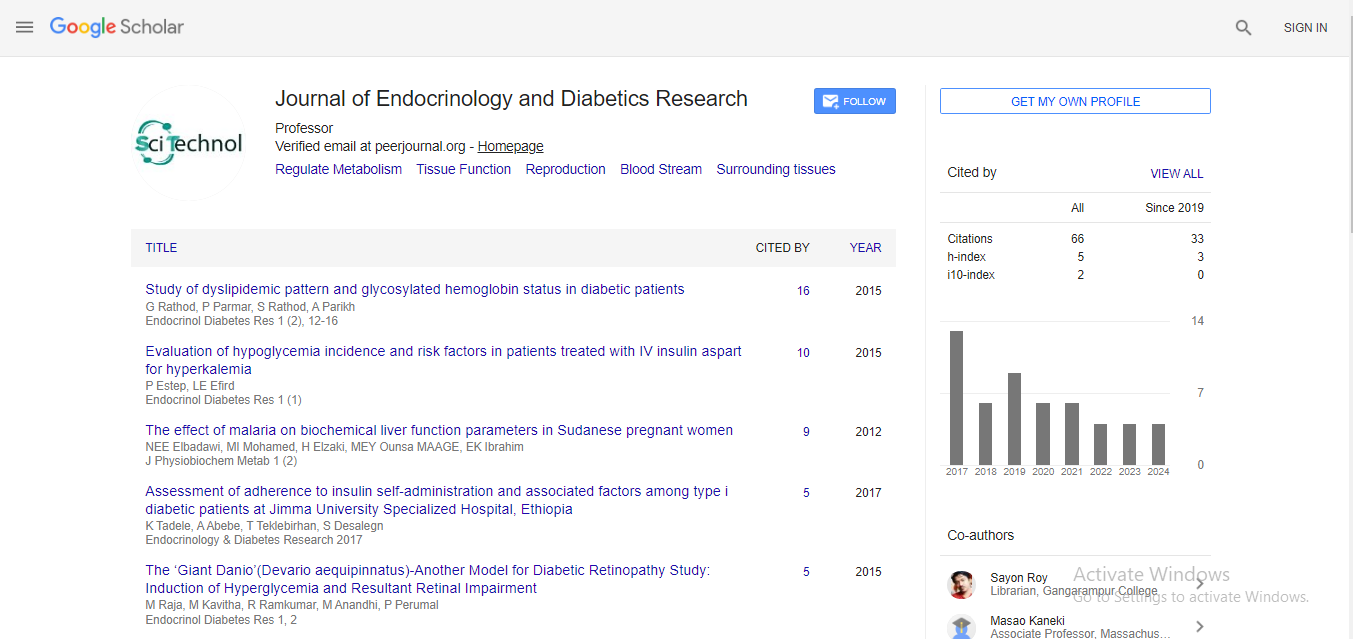Editorial, Endocrinol Diabetes Res Vol: 7 Issue: 10
Prevalence of Metabolic Syndrome in Specially Challenged Children
Obesity has become one of the major risk factors for chronic diseases later in life. It is a reversible predisposing factor for several debilitating diseases including atherosclerosis, hypertension and diabetes mellitus. So our main goal is to raise awareness among the special care centers and to educate the parents and staff about the risks of obesity and associated disorders and measures to be taken to improve their lifestyle and prevent the complications which may occur in the future in such individuals. This study aimed to determine risk factors by assessing the prevalence of obesity, overweight, central obesity, their associated factors and other diseases in specially challenged children and to educate the parents and care takers about the risk of among them. The study was done based on a pre-structured questionnaire comprising the lifestyle data, in particular, age, sex, ethnicity, medical condition, diet, socioeconomic status, education level, family history of obesity and frequency of physical activity in specially challenged people. Variables including height, weight, height/weight ratio, waist circumference, calculation of BMI were also determined as a requirement to study obesity among them. Diagnosis of obesity and central obesity was confirmed by the WHO standard recommended method by determining of Body Mass Index (BMI) and Waist Circumference (WC). We studied the percentage of specially challenged children who are obese, overweight, have central obesity and are at risk. The study provided information about the changes in lifestyle which are required to avoid the complications and reducing the prevalence of obesity among the specially challenged people. It also helped in educating the parents and care takers of these people regarding risk of cardiovascular disorders and the diseases associated with obesity and among these people. The prevalence of obesity was high indicating that these individuals are prone to chronic diseases in the future, if not intervened at early stages. There is a need to educate the parents and care takers of these people. More health programs should be introduced among these centers to fight the prevalence of obesity and make the health care providers aware of the danger of obesity among them.
Abstract
Obesity has become one of the major risk factors for chronic diseases later in life. It is a reversible predisposing factor for several debilitating diseases including atherosclerosis, hypertension and diabetes mellitus. So our main goal is to raise awareness among the special care centers and to educate the parents and staff about the risks of obesity and associated disorders and measures to be taken to improve their lifestyle and prevent the complications which may occur in the future in such individuals. This study aimed to determine risk factors by assessing the prevalence of obesity, overweight, central obesity, their associated factors and other diseases in specially challenged children and to educate the parents and care takers about the risk of among them. The study was done based on a pre-structured questionnaire comprising the lifestyle data, in particular, age, sex, ethnicity, medical condition, diet, socioeconomic status, education level, family history of obesity and frequency of physical activity in specially challenged people. Variables including height, weight, height/weight ratio, waist circumference, calculation of BMI were also determined as a requirement to study obesity among them. Diagnosis of obesity and central obesity was confirmed by the WHO standard recommended method by determining of Body Mass Index (BMI) and Waist Circumference (WC). We studied the percentage of specially challenged children who are obese, overweight, have central obesity and are at risk. The study provided information about the changes in lifestyle which are required to avoid the complications and reducing the prevalence of obesity among the specially challenged people. It also helped in educating the parents and care takers of these people regarding risk of cardiovascular disorders and the diseases associated with obesity and among these people. The prevalence of obesity was high indicating that these individuals are prone to chronic diseases in the future, if not intervened at early stages. There is a need to educate the parents and care takers of these people. More health programs should be introduced among these centers to fight the prevalence of obesity and make the health care providers aware of the danger of obesity among them.
 Spanish
Spanish  Chinese
Chinese  Russian
Russian  German
German  French
French  Japanese
Japanese  Portuguese
Portuguese  Hindi
Hindi 


